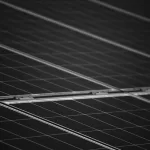We provide expert solar panel design, installation, and maintenance services to help you harness clean, renewable energy, reduce your electricity costs, and increase your energy independence.
A Solar Photovoltaic (PV) Panel is a cutting-edge system that converts sunlight into electricity using semiconductor materials, typically silicon, to generate direct current (DC) power. This DC power is then converted into alternating current (AC) through an inverter, making it suitable for powering homes, commercial establishments, or stored for future use.
At Chronicle Electric, we specialize in providing solar PV panel design and installation services tailored to meet the unique energy needs of your business or property. Our mission is to help you harness solar power efficiently, reducing your energy costs while contributing to a more sustainable future.
By choosing Chronicle Electric, you’re making a smart, long-term investment in energy efficiency and environmental sustainability.

Our design process is built to ensure your solar PV system delivers maximum performance and efficiency. Here’s what you can expect:
Our installation process is planned to be quick and smooth, with minimal disruption and maximum efficiency:
Solar PV panels are more than an energy solution—they’re a game-changer for sustainability, financial growth, and long-term success. Let’s explore how solar power empowers each stakeholder:
Lower Electricity Bills
By producing your own electricity, you rely less on the grid, which helps lower your monthly electric bills.
Energy Independence
Solar panels give you more control over your energy use, helping you rely less on utility companies and shielding you from increasing energy costs.
Environmental Impact
Solar energy is clean and renewable, allowing homeowners to lower their carbon footprint and support a more sustainable future.
Increased Property Value
Homes with solar panels often have higher value and appeal more to buyers, offering a strong long-term return on investment.


Reliable and Low Maintenance
Homes with solar panels often have higher value and appeal more to buyers, offering a strong long-term return on investment.
Incentives and Rebates
Homeowners can benefit from government incentives, tax credits, and local utility rebates that help lower the initial cost of installing solar panels.
Energy Storage Options
Combining solar panels with a battery storage system lets you save extra energy for use at night or during power outages, giving you greater independence and peace of mind.
Sustainability and Future-Proofing
As renewable energy grows in importance, solar panels help make your home energy-efficient and environmentally friendly for the long term.
Homeowners installing solar panels can benefit from a variety of incentives and rebates designed to make solar energy more affordable and accessible. These programs often vary by location, but here are the key incentives and rebates commonly available:

Each state offers its own solar incentives, which can include rebates, tax credits, and grants. Some examples include the Federal Solar Investment Tax Credit (ITC).

Each state offers its own solar incentives, such as rebates, tax credits, and grants. Some examples include:

Some utility companies provide rebates or incentives to customers who install solar panels. These programs differ by area, but common incentives include:




Several states and local governments offer low-interest loans or financing programs to help homeowners pay for solar panel installations. Examples include:

Federal and state grants are available to help low-income households afford the cost of installing solar energy systems.
A solar PV panel design and installation service typically includes a site assessment, system design tailored to your roof and energy needs, permitting and paperwork, installation of panels and inverters, electrical connection, and final inspection. Many providers also include performance monitoring and warranty coverage.
The average solar PV system installation takes 1–3 days, depending on system size and complexity. However, the entire process rom initial consultation to final inspection can take 2 to 6 weeks, including permitting and utility approval.
The cost of solar panel installation is influenced by system size (in kilowatts), panel type and brand, roof complexity, location-specific labor rates, permitting fees, and available incentives or rebates. Battery storage and advanced monitoring features can also add to the total price.
The best solar panel design depends on your roof orientation, shading, energy usage, and budget. A professional installer will assess your property and use tools like solar mapping and load analysis to create an efficient layout. Aim for a design that maximizes sunlight exposure while minimizing system losses.
Most homeowners see a return on investment (ROI) within 6 to 10 years, depending on electricity costs, system size, and local incentives. Over a system’s 25+ year lifespan, solar panels can save you tens of thousands in energy bills while increasing your property value.
At Chronicle Electric, we provide top-notch electrical services that are reliable and environmentally friendly.